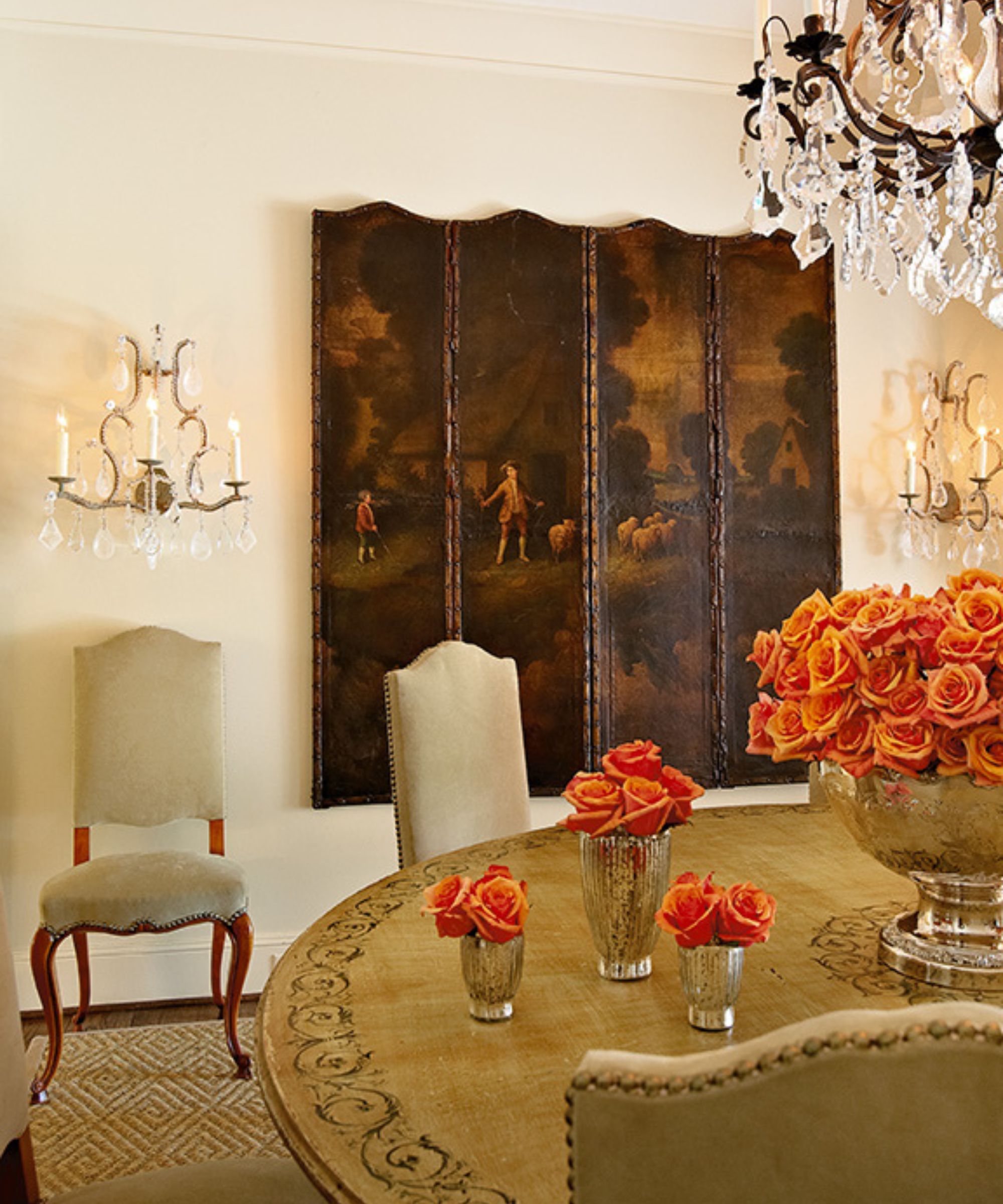How can you determine the age of thrifted or antique furniture? We ask the experts
Learn how to sort hidden gems from pieces worthy of an upcycling project


If you are one for weaving characterful pieces into more current interior design trends at home, you will know how difficult it is to resist a thrift store. Second-hand furniture finds can make brilliant starting points for DIY projects or be objects to admire as they are.
Perhaps you are looking to swerve your home's style towards a particular design era, or you're out to upcycle a piece to modern effect. But how can you tell the difference between something truly vintage, perhaps even antique (and of great value), and something that is simply ripe for an upgrade?
How to determine the age of thrifted furniture
When designing a home that never dates, including items that exude craftsmanship is a must. Whether your antiquing skills match those of Martha Stuart or not, there are some telltale signs to help you understand the age and value of thrift finds. Experts lend a hand so that you can get the look of classic home decor just right.
1. Does it have a makers mark?

Much like a painter signs a work of art, a maker's mark on an item of furniture is a sign of craftsmanship and will typically show the name and address of the maker, sometimes with specific dates. This is an ideal starting point for researching which time era a piece is from.
'For any piece of furniture, the first thing that I do is look for a maker's mark,' explains Willow Wright, owner of vintage store Urban Redeux. 'This will give a lot of information about the manufacturer and many times the name of the collection.'
Naturally, these are not easy to find, as makers did not want to disrupt the aesthetic of pieces. You will need to inspect the entire piece, remove any drawers, and look in inconspicuous places for a stamp, embossed, or even paper label. Behind doors or in the side panels of interior drawers can be good places to look. 'On couches and chairs, the makers' mark is often under a cushion on the base of the piece,' adds Willow.
Knowing the manufacturer will give you a great lead, providing insight into the date it might have been made and helping you understand its origins. Anything over 100 years old is classed as 'antique' and anything younger is typically described as 'vintage'. When well made, both antique and vintage pieces can make sound transitional decor pieces.
Design expertise in your inbox – from inspiring decorating ideas and beautiful celebrity homes to practical gardening advice and shopping round-ups.

Willow is the proud owner of Urban Redeux, a vintage store in Northern Virginia that sees hundreds of unique furniture pieces pass through its doors on the regular.
2. How 'perfect' is it?

Perfection is not a sign of beauty per se, especially when we are talking about antique items. Anything too perfect might mean that it was machine-made rather than crafted by hand. If an item appears to be machine-made, this would indicate that it's a more modern find from the 20th century.
'The devil is in the details, as they say,' continues Willow. 'There are ways to determine the quality or era of a piece of furniture based on the drawer construction, overall finish of the piece, the legs (style), and even the details on the wood.'
Christie Ward, and Staver Gray, Co-Founders of the interior design firm Ward + Gray, also look at the design details to help unpick an item's history:
'Typically, we would tell the age of the piece by the style or era it's from,' says Christie. 'If you're unsure of the design period of a piece, you can recognize certain characteristics of antiques – most antique furniture was made by hand, so there are irregularities and inconsistencies.'
'If a piece is perfectly symmetrical and perfect, it was likely made by a machine and is a reproduction.' For example, something near perfect, with hairpin legs, might stand out as a mid-century design, while a heavy and ornate dresser with rich carvings could be a telltale sign of a Victorian make.

Christie and Staver met while studying interior design at Parsons School of Design in New York City and bonded over a mutual love for antique lighting and French rattan. They’ve worked side by side ever since, and with a home base in Soho, Ward + Gray works on boutique hospitality and residential projects across the US and internationally.

FAQs
How can you tell if thrifted furniture is good quality?
Beauty is in the eye of the beholder, but the excitement of thrift furniture shopping is essentially finding a diamond in the rough. Without going to auction, how can you tell whether it is a diamond or a dud?
It is all in the construction. 'A good antique will have solid wood drawers, a solid wood back, or beautiful joints where the wood meets,' says Christie. A good make will not only look good and make a design statement, even in a modern home, but it should stand the test of (more) time and age gracefully.
'Also, look for dovetail construction on the drawers, a good indicator of a quality built piece,' adds Willow.
Should you upcycle vintage furniture?
Restoring wood furniture is one approach, but if you are more in the mood to paint wooden furniture or change the hardware for something more 'modern' that replicates the latest piece from your favorite furniture store, when is it a good move, and when is deemed unwise? Heaven forbid you shave off the value of a historic piece...
'We typically try to give the piece a good inspection before purchasing so we can ensure the antique will stand the test of time in our hotel or residential project,' says Christie. 'While we love to buy quality antiques, we don't typically shy away from signs of wear. We love how antiques show their age and feel as if they tell a story with their imperfections.'
Retaining a furniture item's uniqueness is key, especially if it is a true display of craftsmanship, made with rich materials. 'In addition to condition, we hope to see that an antique has been unaltered,' adds Staver. 'We look for pieces with the original hardware and original finish. We love patina and age – as long as it's authentic.'

Much like family heirlooms, putting the detailed lines of antiques in the spotlight can be a great way to include them in a modern interior design scheme. 'For me, antiques are like art in that oftentimes they elicit a visceral response,' adds Staver. 'If you buy what you love, the perfect spot will present itself.'
Signs that your piece is not of great value will be clear. Odors, drawers that stick and dark spots can be problematic and if anything can be a sign that the pieces have not been taken care of, perhaps as the buyer/seller did not see it as a worthwhile investment.
Upholstered items in particular might carry some of these more visible issues, but if the rest of the design is in good condition, they could be just the piece you need for an upcycling project: 'Unless the plan is to have the item fully reupholstered, I'd suggest leaving these behind,' adds Willow.
'When contemplating buying a piece that may need some TLC, consider the time, effort and cost that will go into it and be realistic,' kindly advises Willow. 'We all have too little time these days and you don't want something taking up space in your garage that you may never get to.'
If you find the makers' mark and are able to put your detective skills to the test, you are in good stead to determine the age (and value) of thrift furniture. For those that are of true value, it should be clear, and its historic beauty will shine through. For anything less than perfect (and not in an antique way), always consider your resources before taking on a project.

Camille is the former deputy editor of Real Homes where she covered a broad range of topics, including house tours, small space design, and gardens. She studied English language and Italian at the University of Manchester and during a year abroad studying linguistics and history of art in Bologna, Italy she started documenting her adventures and observations in a blog. Camille is always creating and spends her downtime painting, taking photos, traveling, and writing short stories.